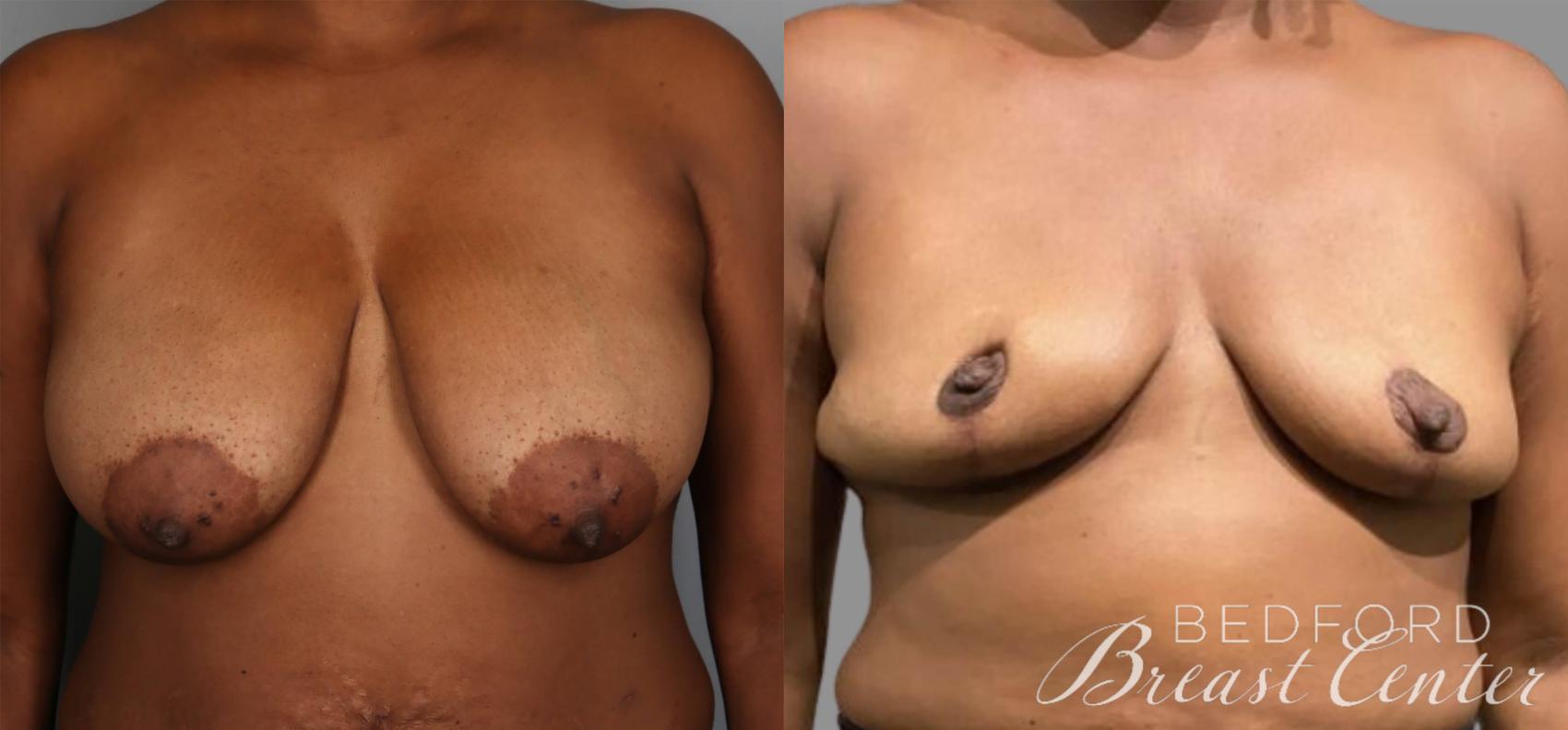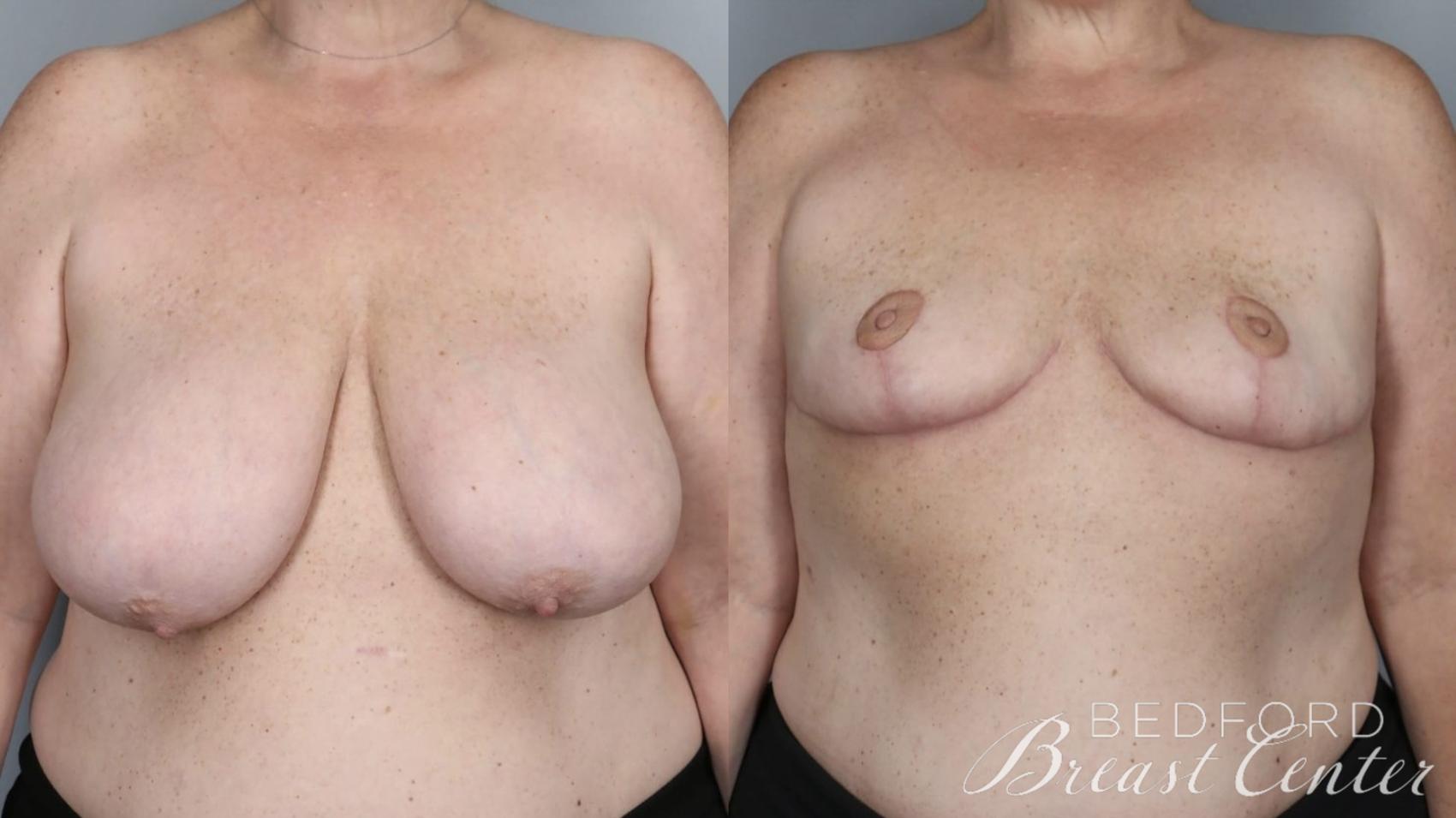Dr. Richardson and Dr. Memsic are two of the top breast surgeons in Los Angeles, using innovative techniques to create excellent clinical and aesthetic outcomes.
Schedule a Visit
Bedford Breast Center
436 N Bedford Dr, Ste 308
Beverly Hills, CA 90210
Phone: (310) 278-8590
Monday – Friday: 9 a.m.– 5 p.m.
SWIM Breast Cancer Reconstruction in Beverly Hills
Until recently, having immediate breast reconstruction without implants or extensive flap procedures wasn’t an option. The SWIM mastectomy (for skin-sparing, wise pattern, internal mammary perforator) offers cancer removal and natural breast reconstruction in a simplified, single-stage procedure, making it an appealing breast cancer reconstruction option to our patients from the Greater Los Angeles area, Orange County, and Ventura County.
Bedford Breast Center’s Dr. Lisa Cassileth, one of the top breast reconstruction surgeons in the Los Angeles area, developed the SWIM technique. It has revolutionized breast reconstruction by preserving healthy breast tissue and creating smaller, natural-looking breasts without implants. This innovative approach provides numerous advantages over traditional mastectomy techniques and opens new possibilities for patients with larger breasts.
What Is SWIM Mastectomy & Reconstruction?
The SWIM technique is a type of oncoplastic surgery that combines cancer removal with plastic surgery techniques to create an attractive, natural breast shape.
To learn more about the SWIM technique for breast reconstruction, please visit pubmed.gov.
SWIM Mastectomy & Reconstruction vs. Traditional Mastectomy & Reconstruction
The SWIM technique can be performed on one or both breasts and offers several advantages over traditional mastectomy and reconstruction:
- No implants or artificial devices: Unlike traditional breast reconstruction, this technique does not rely on breast implants or artificial devices. Utilizing your own natural breast tissue creates an authentic look and feel.
- Single procedure: The entire process can be completed in a single operation, eliminating the need for multiple surgeries and reducing overall recovery time.
- Superior cosmetic results: The SWIM technique preserves the natural breast envelope, allowing for a better cosmetic outcome and preservation of the nipple. The technique creates smaller, natural-looking breasts that more closely resemble breast reduction results versus a standard mastectomy. There are no additional scars on the back or abdomen as with flap reconstruction.
- Greater comfort and shorter recovery time: Compared to traditional mastectomy and reconstruction, the SWIM technique typically results in a shorter, more comfortable recovery period. You can get back to your daily routines more quickly.
- Expanded candidacy: The SWIM technique provides an excellent option for women who may not prefer or be suitable candidates for traditional reconstruction.
The SWIM technique can be performed for prophylactic mastectomy. Depending on cancer status, most patients do not require radiation therapy or screening mammograms after having the procedure.




Who Is a Good Candidate for SWIM Mastectomy & Reconstruction?
The technique is well suited to women with large or sagging breasts who want to maintain a natural-looking breast shape. It provides an alternative for patients who prefer to avoid implants, flap reconstruction, extensive incisions, longer recovery times, or multiple surgical procedures. Additionally, patients who may not be eligible for traditional breast reconstruction because of health issues, radiation injury, or weight may find the SWIM technique a viable option.


- No Compression - Comfortable, pain-free imaging
- Open Design - Won't trigger claustrophobia
- Ideal for Dense Breasts - Advanced detection with contrast
- Fast Results - Complete scan in under 10 minutes
Vera Scan with contrast provides enhanced detection comparable to MRI, delivering precise, accurate diagnosis in a fraction of the time.
Call (310) 278-8590 to reserve your appointment.
Is Vera Scan Right For You? Take The QuizHow Are SWIM Mastectomy & Reconstruction Performed?
To better understand how this procedure is performed, think of it as having two parts or stages. The initial step involves the mastectomy, during which breast tissue is removed while preserving the skin and underlying fat. In the second stage, the surgeon skillfully reshapes the remaining skin, fat, and breast tissue to create a new breast mound. The technique does not involve cutting or removing any muscle, nor does it require the use of tissue from other areas of the body. The final result is a smaller breast with scars resembling a breast reduction procedure.
“I have had breast cancer twice and I can honestly say I wouldn’t have been able to get through it without the support of the whole staff at the Bedford Breast Center. The first doctor I spoke to after my first diagnosis was Dr. Memsic and she completely calmed me down. She is not only a great surgeon, but an amazing human being. I also had Dr. Cassileth as one of my plastic surgeons. Her attention to detail and perfectionism are outstanding. Any time someone comes to me asking for referrals, I send them to the Bedford Breast Center. The office is clean and warm and the staff are fantastic.”
Stacey R. – Google
What Is Recovery Like After SWIM Mastectomy & Reconstruction?
Recovery varies from patient to patient, and it is essential to follow your surgeon’s postoperative instructions carefully. We recommend staying at an aftercare facility for 1 to 2 nights post-surgery. Our aftercare nurses will remain in close communication during your recovery to ensure a smooth healing process.
After surgery, patients may experience some discomfort and bruising, which may be managed with prescribed pain medication. Compression garments are recommended during the weeks after surgery to reduce swelling. Most patients can resume their daily routines within 1 to 2 weeks and return to work and light exercise. However, it is important to avoid heavy lifting for about 6 weeks.
The breast surgeons at Bedford Breast Center in Beverly Hills are innovative physicians who provide compassionate, personalized patient care. Our world-class facility serves patients from Los Angeles throughout Los Angeles, Southern California, and nationwide. To learn more about our center and if SWIM mastectomy and reconstruction is a good option for you, call us at (310) 278-8590 or contact us using the online form to schedule an appointment.
Curious if your procedure is covered by insurance? Bedford Breast Center has partnered with a specialized billing service to help you maximize your insurance benefits. Click here to take a short quiz and find out if you qualify.







